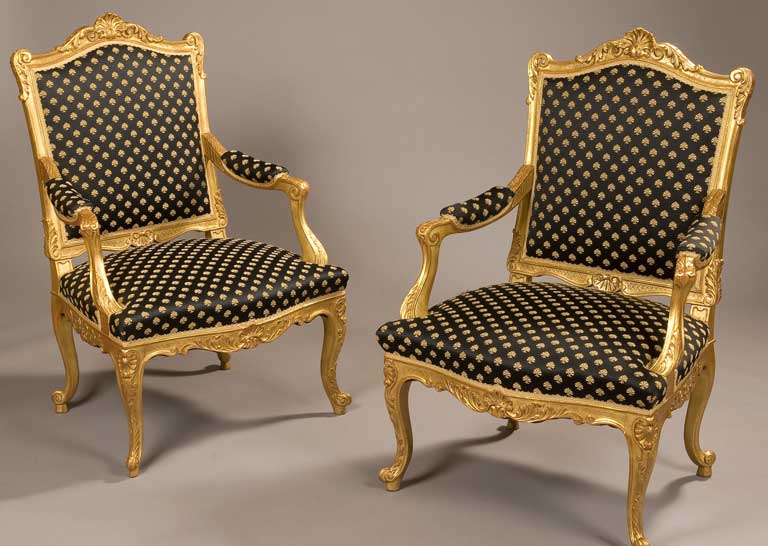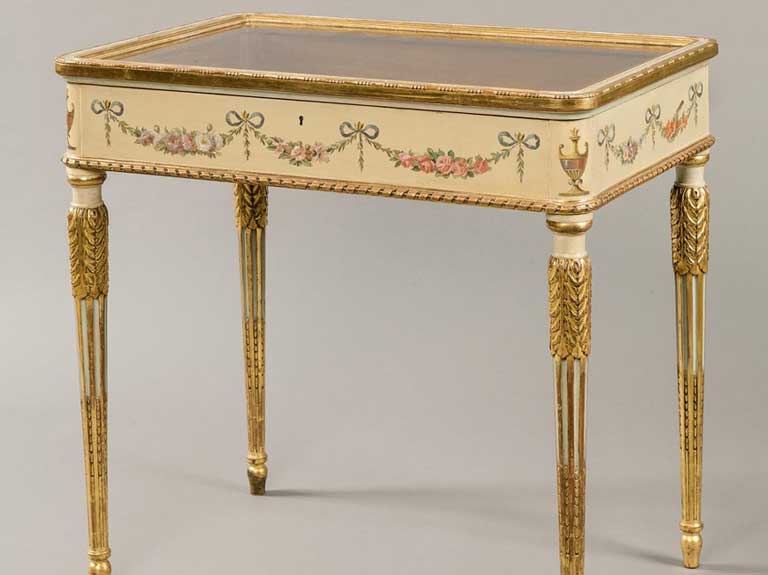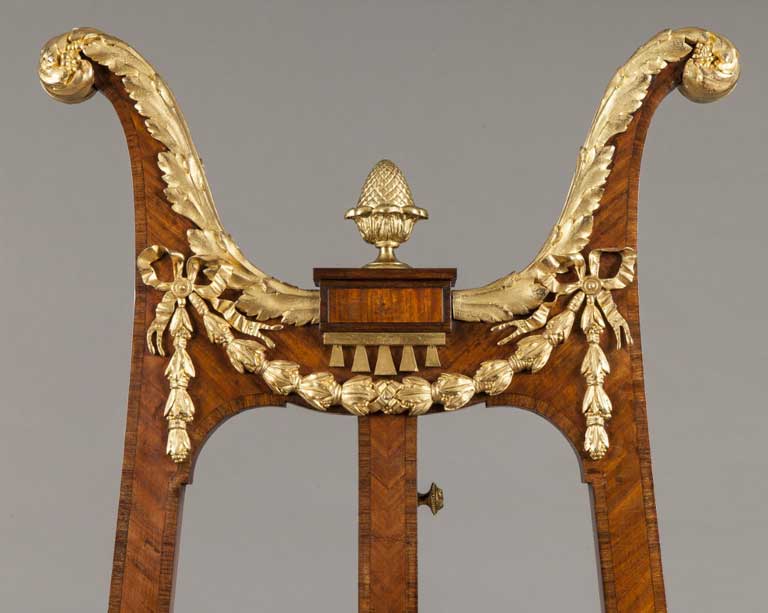Gilding
Gilded surfaces by their very nature are generally fragile and with time can become worn or scratched. They always gather dirt and dust as gilded items tend to be ornate in form and so require an element of cleaning before repair and restoration.
From fully re-gilding from bare wood to aged gilt surface conservation, I can provide all aspects of repair and restoration to either water or oil gilded pieces. I have completed many extensive projects from the careful conservation of 18th Century furniture through to the full gilding of newly made contemporary items.

Projects range from the replication of missing elements of a design, either moulded from composition or carved repair in lime wood, to reforming large sections of the damaged gesso surface.
Like all good traditional gilders, I mix and make all of my own base products such as composition (a traditional mouldable resin), gesso (a mix of rabbit skin glue and chalk whiting) and blend coloured boles (fine coloured clays) which alter the tone of the final laid gilt leaf once applied.
In addition to matching the original coloured bole layers beneath, it is always important to identify the correct gold leaf carat used which can range from 6ct white gold to 24ct pure gold leaf. I am able to provide and finish the newly gilded surface to an appropriate distressed and patinated appearance or a highly burnished finish when using water gilding.
Where silver or white gold leaf is used which is bellow 22ct, I always use a suitable lacquer to seal the surface so as to ensure the leaf does not oxidise and brown over time.


A gilt restoration project nearly always starts with the need to reveal the condition of the original surface by way of thoroughly cleaning the entire piece. The extent of this operation will depend on various factors including the age and style of the piece as well as the client’s taste with regard to the final overall final appearance.
The extent of the cleaning process for a gilt item will very much be limited by the condition of the original gilt surface and its underlying layers. This is especially the case with aged water gilding where the surface can be extremely worn and therefore the remnants of the gilt leaf are microns thin so can be easily irreversibly damaged even with the lightest methods.
With these factors in mind, test areas of cleaning are always made before an assumption can be made as to the extent of restoration or conservation of the surface that will be achievable.
With an item cleaned, all repairs are completed using traditional methods and newly laid leaf applied using the correct process whether oil or water gilding.
Newly laid gold is then carefully toned down and blended to perfectly match in with the original surface.

25 years of experience working in fine antique furniture restoration...
I have restored thousands of items back to their best condition and have a reputation for outstanding quality. From my full equipped, secure and insured premises I provide a highly personalised service to all my clients.
Contact
-
Penrose Restoration,
Vowels Lane
Kingscote
West Sussex
RH19 4LD - 01342 618233 / 07790 909691
- julian@penrose-restoration.com
- See me on Instagram